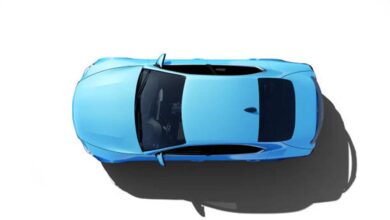Every bike owner knows the heartbeat of their motorcycle is in the roar of its engine. But do you know the hidden treasures embedded in your motorcycle manual? This often-overlooked guidebook is more than just a guide to repairs and specifications. It’s the gateway to understanding and mastering your beloved ride.
Thus, I’m here to invite you to get to know your motorcycle owners manual better. We’ll dive into what it actually offers, from information on how to properly and safely use your bike to how to take care of it the right way.
Without further ado, let’s jump in!
The Underestimated Power of Motorcycle Owners Manuals
We often stash away our motorcycle owners manuals soon after purchase, only to refer to them when something goes wrong. But these manuals aren’t just emergency handbooks; they’re comprehensive guides to your motorcycle’s anatomy and for unlocking bike performance.
The bike you’ve been riding might have features you aren’t even aware of. Whether it’s advanced throttle settings, particular taillight functions, or tips to optimize performance, a deep dive into your manual might surprise you with what you find.
In this age where manufacturers are making technical details increasingly proprietary, it’s essential to recognize the motorcycle manual as your right-to-repair tool. It’s not just about knowing how to change a part, but understanding why it needs changing, when it might need it, and how your actions influence the machine’s performance and longevity.
Mastering Motorcycle Throttle Control
The throttle isn’t just a grip; it’s a dialogue between you and your motorcycle. How you handle it affects acceleration, fuel efficiency, and even the bike’s overall health.
Indeed, your manual provides essential insights into motorcycle throttle control. From understanding how to handle different terrains to extracting the best from your engine without straining it, the key is at your fingertips. Throttle control can be influenced by various factors:
- Riding Mode Selection: Modern motorcycles often come with selectable riding modes. These modes adjust throttle response to suit different conditions. For instance, a rain mode will dull the throttle response, ensuring smoother power delivery in wet conditions. Understanding how these modes adjust throttle dynamics can significantly improve your riding experience.
- Engine Braking: A less-discussed aspect of throttle control is engine braking, which happens when you roll off the throttle. By understanding how your motorcycle behaves during engine braking, you can manage your speed better, especially while descending hills or approaching turns.
- Throttle Position Sensor (TPS): This electronic sensor monitors the throttle’s position and relays the information to the motorcycle’s electronic control unit (ECU). A malfunctioning TPS can lead to uneven throttle response. Regular checks and understanding the TPS function can help in diagnosing throttle-related issues.
- Maintenance: A gunky throttle body or a frayed throttle cable can adversely impact throttle control. Regular maintenance, as detailed in your motorcycle manual, can ensure that the throttle response remains crisp and predictable.
To fully master motorcycle throttle control, one must also appreciate the balance between throttle and clutch, especially during low-speed maneuvers. The ‘friction zone’ in the clutch lever play, combined with subtle throttle inputs, can make tasks like U-turns or slow-speed crawls effortless and smooth. Your manual might also provide tips on achieving this balance, specific to your motorcycle model.
Furthermore, the power curve of your motorcycle, typically found in your motorcycle manual, gives invaluable insights. By understanding at which RPM your motorcycle delivers peak torque or peak power, you can better anticipate the bike’s response to throttle inputs, ensuring efficient and safe acceleration.
By grasping the intricate details of your throttle and applying them, you’ll not only enjoy a better ride but also prolong the life of your motorcycle, ensuring you get the best performance out of every mile.
Illuminating the Secrets of Taillight Functionalities
Many see taillights as simple indicators, but their functionalities go deeper. They communicate with other road users, ensuring safety during nighttime rides or foggy conditions. Your motorcycle manual sheds light on the nuances of taillight functionalities you might be unaware of.
Did you know that specific taillight patterns can indicate different machine states or issues? From signaling mechanical problems to alerting about electronic issues, these lights are more than just aesthetic features. Understanding them can act as a first line of diagnostics, allowing you to address potential problems before they escalate.
Of course, you’d first need to gain access to your bike’s manual to learn all that, and depending on your situation, you may not have this book with you. Perhaps you lost it or bought one without it; it happens to the best of us. Luckily, nowadays, you can easily get the digital version of your motorcycle manual online. Personally, I always rely on eManualOnline for all my motorcycle manuals since they have a complete library covering just about every model available, and they are super cheap — can’t go wrong here.
Mastering Advanced Motorcycle Settings
For many riders, the quest for motorcycle mastery goes beyond just knowing how to start the engine and operate the brakes. While exploring your motorcycle manual, you’ll find a bunch of advanced settings designed to fine-tune your riding experience and unlock your motorcycle capabilities.
These are the tweaks and configurations that can help you transition from an ordinary rider to a true expert:
- Suspension Adjustments: One of the most significant contributors to ride quality and performance is the motorcycle’s suspension system. Modern bikes often come with adjustable preload, compression, and rebound settings. By understanding and manipulating these settings as explained in your motorcycle manual, you can alter the bike’s behavior to match your weight, riding style, and the nature of the roads you frequent.
- Traction Control Systems: As technology advances, so do the electronic aids on motorcycles. Traction control ensures your rear wheel doesn’t lose grip under hard acceleration or slippery conditions. Some motorcycles allow riders to adjust the sensitivity of this system or even turn it off for a rawer riding experience.
- Rider Assist Modes: Apart from throttle control modes, many modern bikes also offer various assist modes like hill-start assist, cornering ABS, and quick-shifters. Each mode offers a distinct advantage in specific scenarios, and knowing when and how to use them can be gleaned from your motorcycle manual.
- Electronic Fuel Injection (EFI) Mapping: This allows the rider to adjust the motorcycle’s fuel-to-air ratio. Whether you’re aiming for smoother power delivery, better fuel efficiency, or raw performance, tweaking the EFI map can achieve varied results. Some bikes also allow for multiple saved maps, letting riders switch between them based on conditions.
- Tyre Pressure Monitoring Systems (TPMS): An often-overlooked aspect, tire pressure can significantly affect ride quality, tire life, and fuel efficiency. With TPMS, riders can get real-time feedback and maintain optimal tire pressures, as recommended in the motorcycle manual.
- Adjustable Ergonomics: From adjustable footpegs to handlebar risers, understanding how to modify your motorcycle’s ergonomics can lead to a more comfortable and fatigue-free ride. Specific adjustment instructions and recommended settings for various rider heights and builds are typically detailed in the motorcycle manual.
Last Words
Understanding your motorcycle manual is like nurturing a bond with your bike. It’s more than just pages of text and diagrams; it’s a roadmap to optimizing your riding experience. As you harness the knowledge within, you’re not only ensuring the longevity of your motorcycle but also enhancing your relationship with the open road.
As riders, we owe it to ourselves to dive deeper into these manuals. To not just skim but understand, with every page, there’s potential to become a safer and more skilled rider.
So, next time you have a moment, reach out for your manual and unveil the hidden gems that await.








